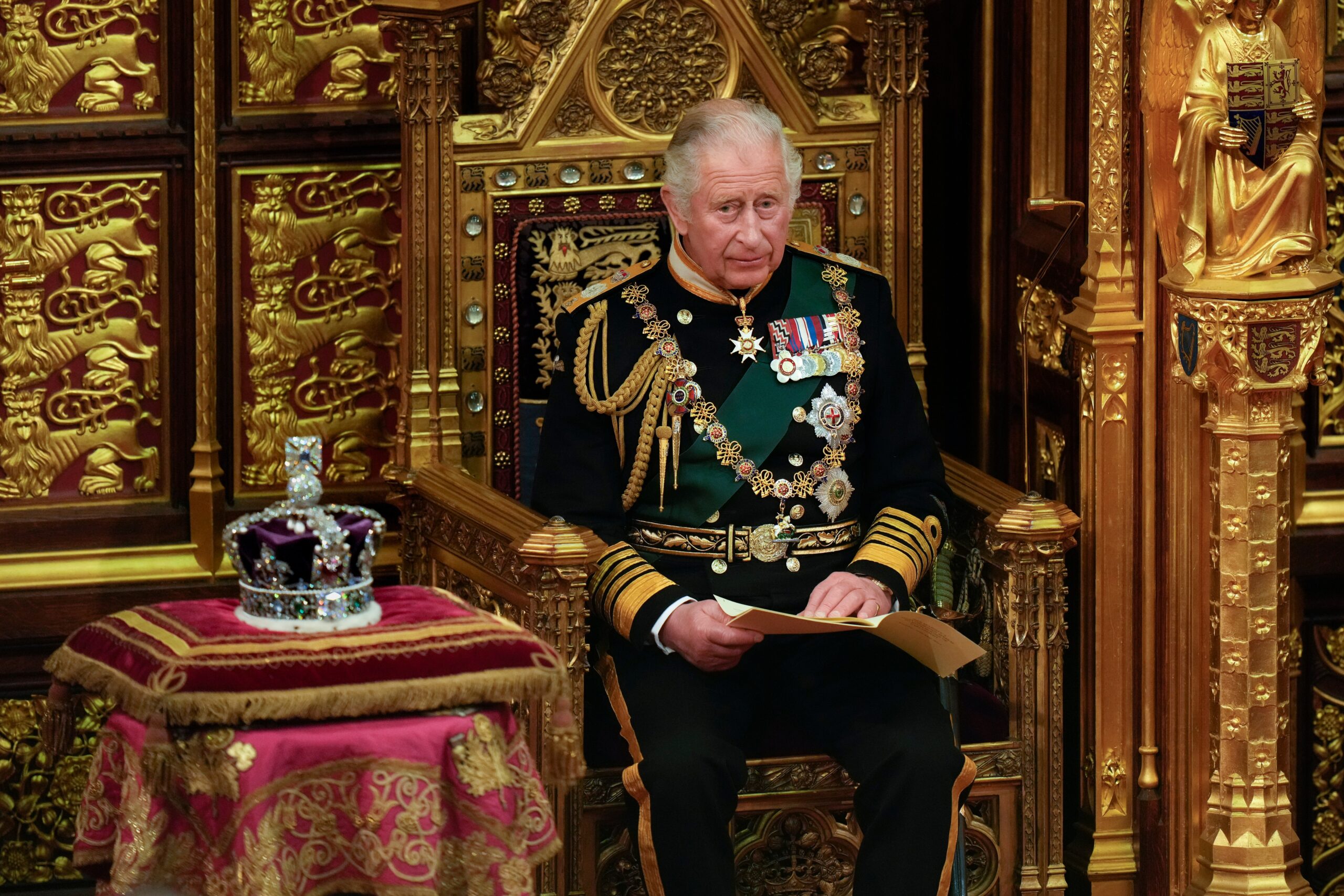
One of the first sheets of the 1st class definitive stamp featuring King Charles III goes on display at the Postal Museum in central London, before they enter circulation later this year
Victoria Jones – PA Images/Getty Images
On 8 February, the Royal Mail unveiled the design for stamps bearing the image of our new monarch, King Charles III. The King is depicted in profile, facing to the left, like his mother before him – but notably is not wearing a crown.
King Charles III at the State Opening of Parliament
Alastair Grant – WPA Pool/Getty Images
The Royal Mail announced on social media: ‘Today, we reveal our new definitive stamp featuring the image of King Charles III. The image of HM The King is an adapted version of the portrait created by Martin Jennings for The Royal Mint. The stamps will go on general sale from 4 April 2023.’
BBC News reports that the no-frills portrait was personally approved by the King. David Gold, the Royal Mail’s director of external affairs, is quoted as stating: ‘The feedback we got back was that he wanted it to be simple… It’s a very human image, with no embellishment.’
As well as the lack of a crown, there are no other royal symbols on the pared-back design, which shows the king with a steady gaze and neutral expression. The familiar elements, however, such as the direction he is facing, are intended as a nod to continuity.
One of the first sheets of the 1st class definitive stamp featuring King Charles III is unveiled as it goes on display at the Postal Museum in central London, before they enter circulation later this year
Victoria Jones – PA Images/Getty Images
The distinctive profile of the late Queen Elizabeth II was created by the artist Arnold Machin and has been used on stamps since 1967. Gold added that the public would have to grow used to seeing the new image on first- and second-class stamps, saying: ‘It was 70 years that we had the same monarch and since 1967 we’ve had pretty much the same stamps.’
The new stamps are now being printed in their millions and will be used alongside those of the late Queen, which will continue to be sold until the old stocks run out.
Postage stamps from a series honouring Queen Elizabeth II
DeAgostini/Getty Images
Britain’s postage stamps are unusual in that they do not bear the name of the country. The new stamps show only the King’s head, their price and now an attached barcode, too. Even before the late Queen, British monarchs would typically be shown wearing a crown or diadem, or with some other markers of royal status. Rarely has a design been so simple and unadorned as the new design, based on a sculpture made by artist Martin Jennings for new coinage (which was then digitally adapted for stamps).
The new image released by the Royal Mail is for what are dubbed ‘definitive’ stamps (regular, non-commemorative postage stamps). Some of the first sheets have been unveiled at London’s Postal Museum, where a special exhibition called The King’s Stamp is now open. The Postal Museum’s website reveals: ‘Definitive stamps are everyday stamps, which in the UK feature the reigning King or Queen. This year, a new monarch will feature on stamps for the first time in 70 years.
‘See some of the rarest and most valuable British stamps from the reigns of six monarchs and explore over 180 years of iconic design in this special exhibition. Find out how stamps and royal cyphers are developed and produced and how monarchs influence these designs, shaping their own royal identity through everyday objects.’
A stamp printed in England, showing King George V of the United Kingdom
Sergey Komarov-Kohl / Alamy Stock Photo
King Charles is the seventh British monarch to appear on stamps. His great-great-great grandmother, Queen Victoria, appeared on the first ever stamp, the Penny Black (printing proofs of which are on display in the new exhibition). The image of Queen Victoria was based on an earlier sketch made when she was just 15 – which continued to be used until her death aged 81.
In our increasingly digital age, the King himself remains a champion of the art of letter writing (the BBC reports that figures from the Duchy of Cornwall indicate he personally wrote 1,830 letters in his last year as Prince of Wales, and received more than 50,000 from members of the public). In the midst of the pandemic he penned a personal letter addressed to ‘Everyone at Royal Mail’, commending postal workers as a ‘point of daily human contact, a friendly, familiar face’.


